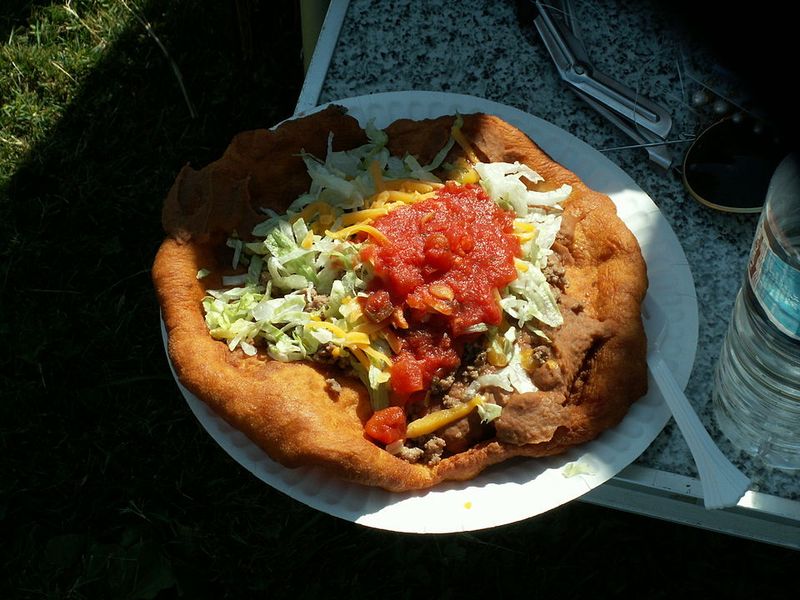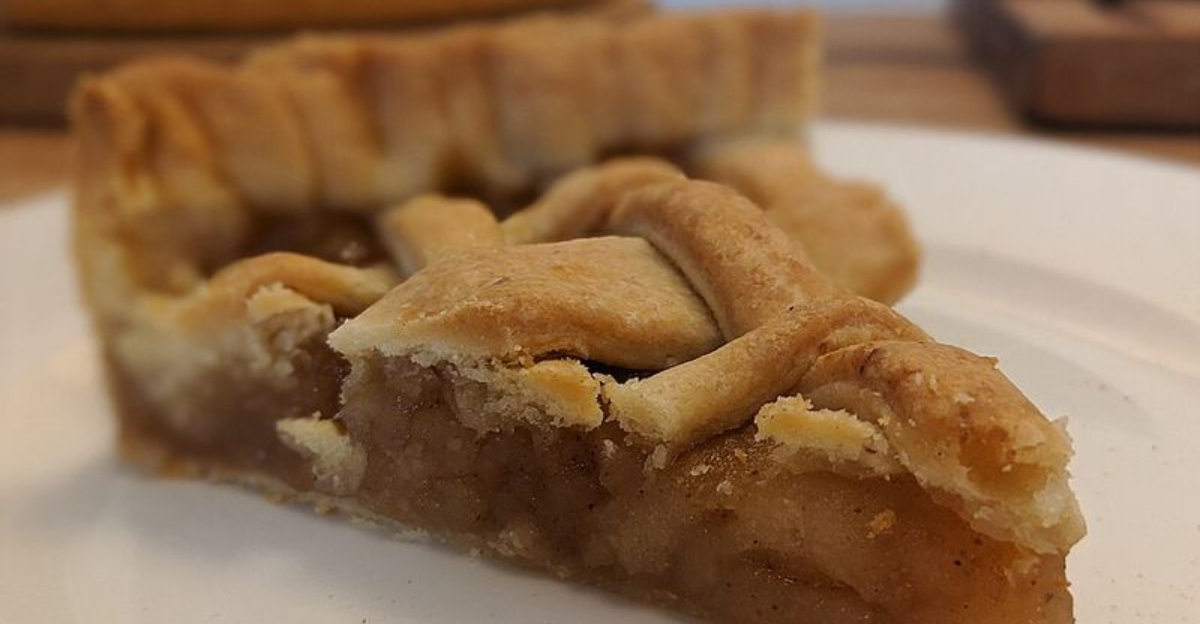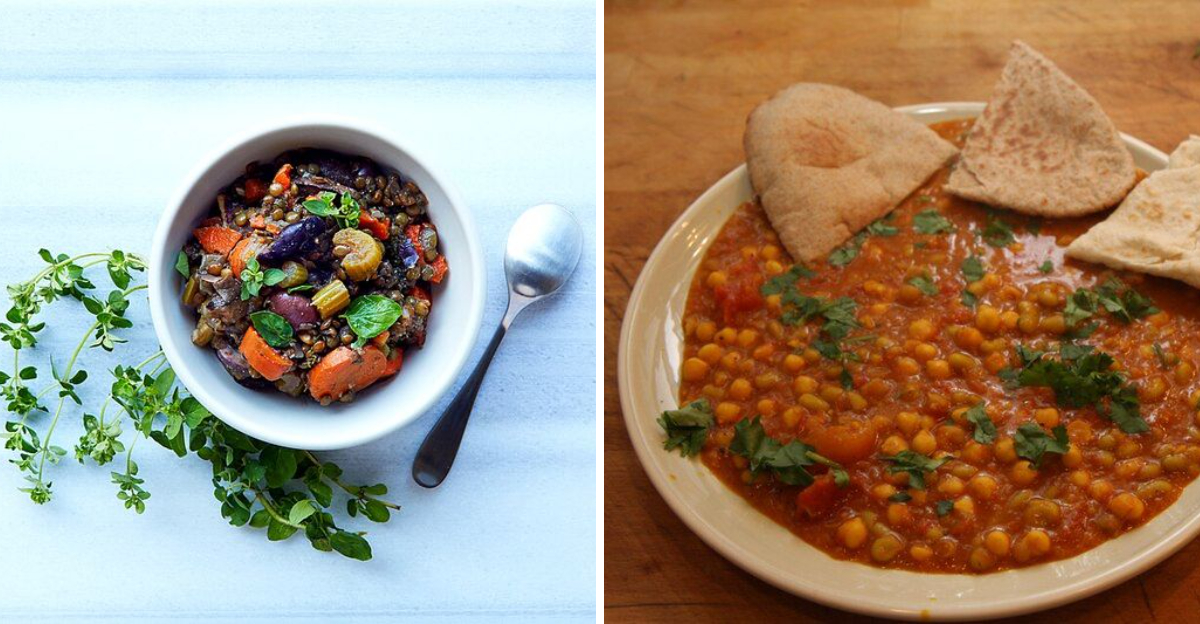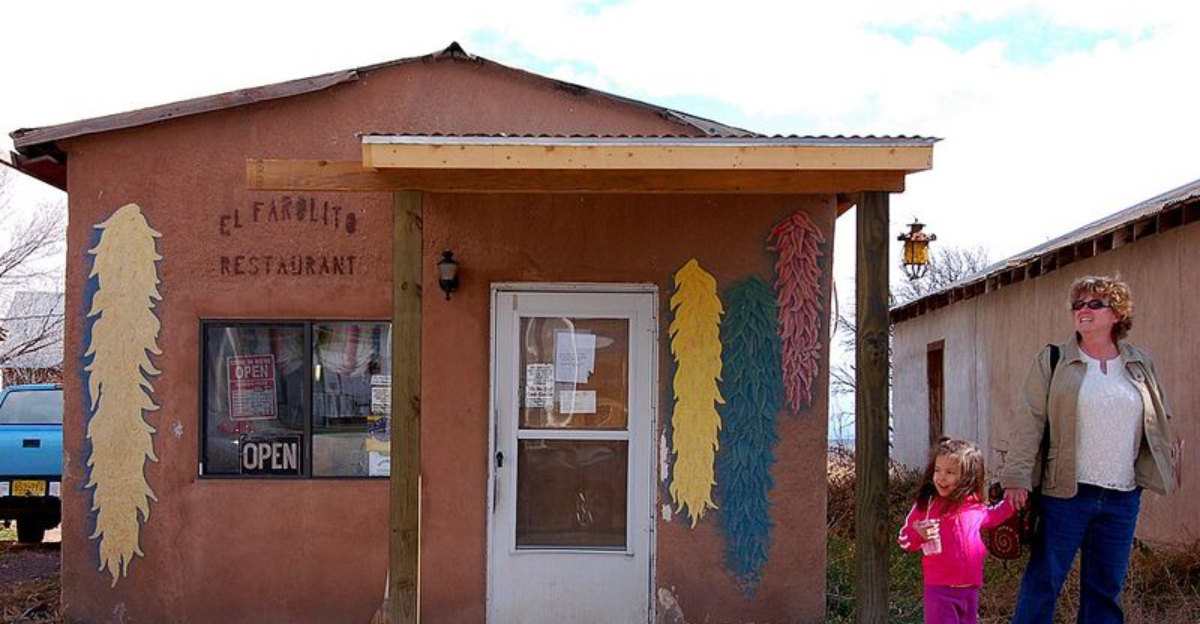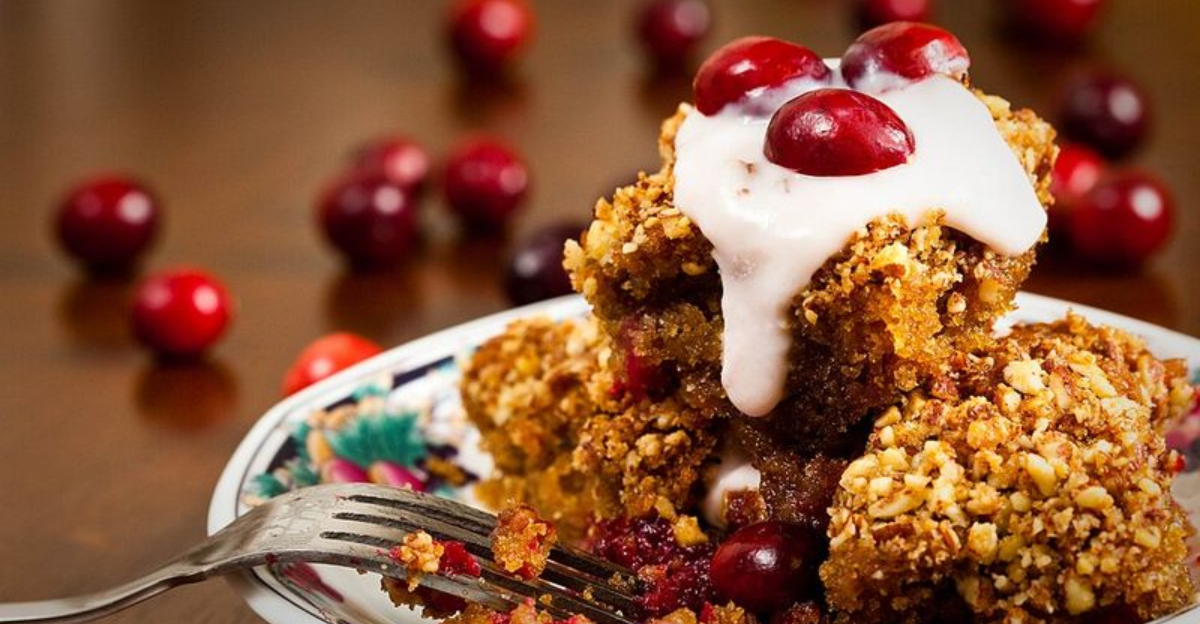20 Unique American Regional Specialties You May Not Know About
America’s food traditions stretch far beyond the dishes everyone already knows.
Hidden in small towns, coastal communities, and mountain kitchens are specialties that locals swear by and travelers often overlook.
Many of them started as humble, practical meals and grew into beloved staples passed down through generations.
Each one carries a sense of place, shaped by the region that created it and the people who kept it alive.
1. Runza (Nebraska)
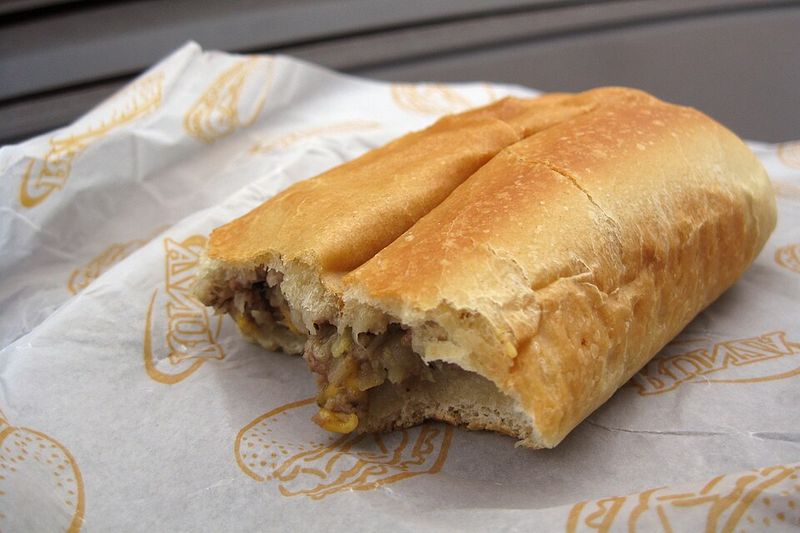
Picture a warm bread pocket stuffed with seasoned beef, cabbage, and onions – that’s Nebraska’s beloved Runza.
German-Russian immigrants brought this recipe to the Great Plains in the 1800s, and it stuck around for good reason.
You’ll find Runza restaurants scattered throughout Nebraska, where locals grab these handheld meals on chilly football Fridays.
The combination sounds simple, but one bite explains why Nebraskans are fiercely loyal to this comfort food classic.
2. Gooey Butter Cake (Missouri)
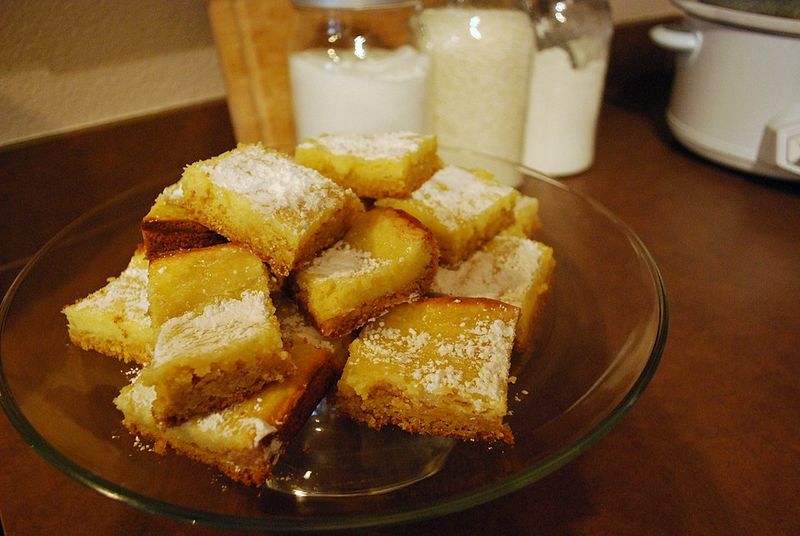
Legend says a St. Louis baker accidentally mixed up ingredient proportions in the 1930s and created pure magic.
Gooey Butter Cake features a dense cake base topped with a cream cheese and butter layer that’s impossibly rich. The powdered sugar dusting on top barely contains the gooey center underneath.
Missourians have been perfecting this “mistake” for decades, turning it into their state’s most treasured dessert that coffee shops serve by the square.
3. Chislic (South Dakota)
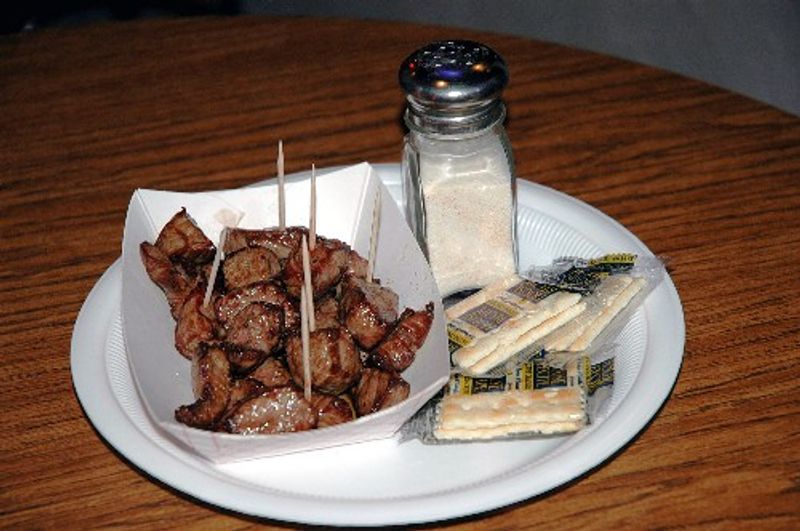
South Dakota’s official state nosh consists of cubed red meat – usually lamb or beef – either grilled or deep-fried and served on toothpicks. Chislic shows up at every bar, restaurant, and family gathering across the state.
The dish arrived with Crimean German immigrants in the 1870s.
Most locals prefer their chislic fried until crispy, seasoned with garlic salt, and paired with saltine crackers. It’s bar food elevated to cultural icon status.
4. Hot Brown (Kentucky)
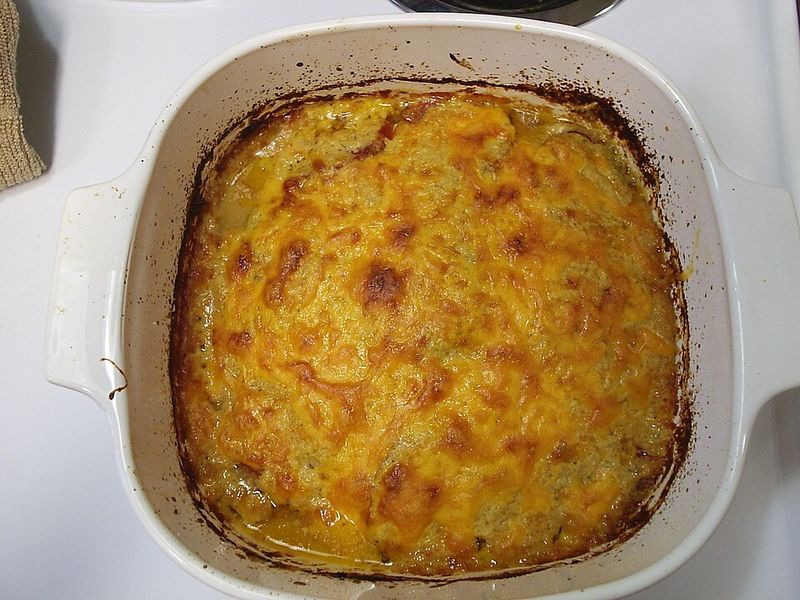
Born in Louisville’s Brown Hotel during the 1920s, this open-faced turkey sandwich drowns in creamy Mornay sauce and gets topped with crispy bacon.
Chef Fred Schmidt created it as a late-night snack for dancing guests who needed something heartier than tea sandwiches.
The Hot Brown requires a fork and knife – no picking this beauty up. Tomatoes and bacon crown the whole production, making it Kentucky’s fanciest comfort food creation.
5. Lefse (North Dakota/Minnesota)
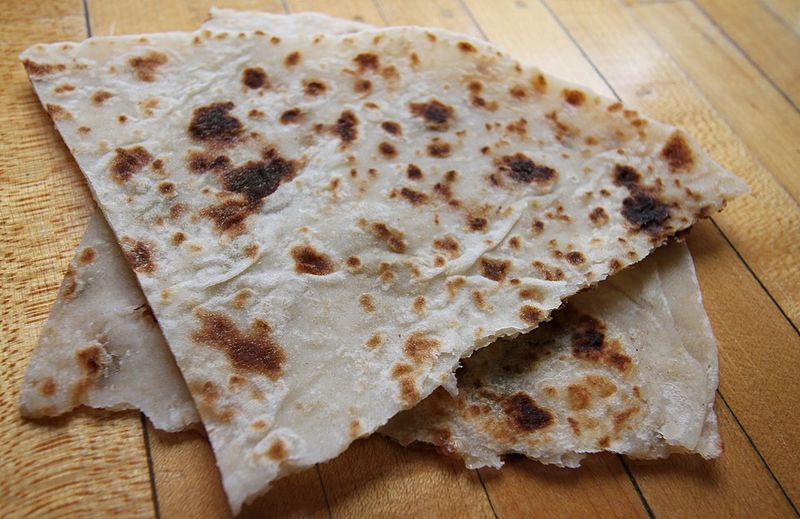
Norwegian immigrants brought lefse to the Upper Midwest, where it became a holiday tradition that families guard jealously.
These soft, thin potato flatbreads get rolled out paper-thin, cooked on a griddle, then spread with butter and sugar. Making lefse requires special equipment and serious patience.
Grandmas across North Dakota and Minnesota still gather every December to make hundreds of these delicate rounds, passing down techniques that can’t be learned from cookbooks alone.
6. Burgoo (Kentucky)

Kentucky’s legendary stew throws everything into one massive pot – multiple meats, corn, tomatoes, lima beans, okra, and whatever else needs using up.
Traditionally cooked outdoors in giant kettles for church gatherings and political rallies, burgoo feeds crowds by the hundreds.
Today’s versions stick mostly to chicken, pork, and beef, but the slow-cooked result remains thick, hearty, and impossible to replicate in small batches.
7. Boudin Balls (Louisiana)
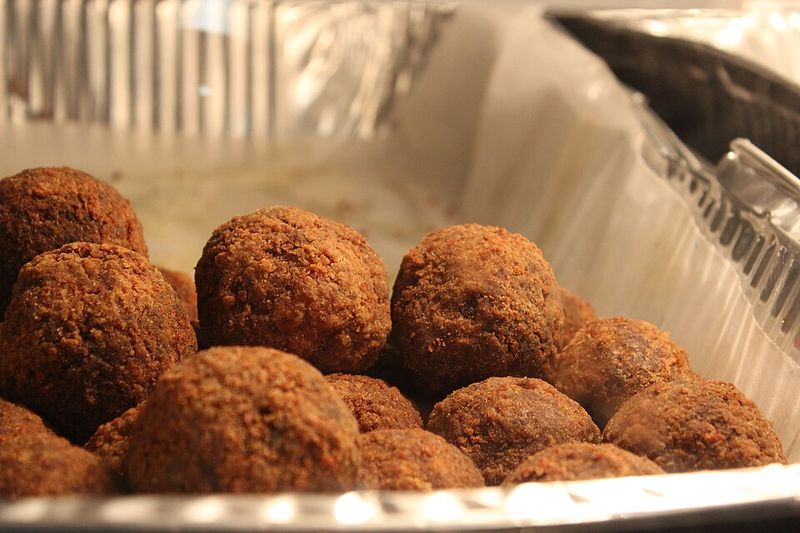
Take Louisiana’s famous boudin sausage – that glorious mixture of pork, rice, and Cajun spices – roll it into balls, and fry until golden. That’s the boudin ball, a gas station snack that’s become a statewide obsession.
Cajun country residents debate which convenience store makes the best ones. The crispy exterior gives way to creamy, spicy filling that’s addictive enough to justify pulling off the highway.
8. Sonoran Hot Dog (Arizona)
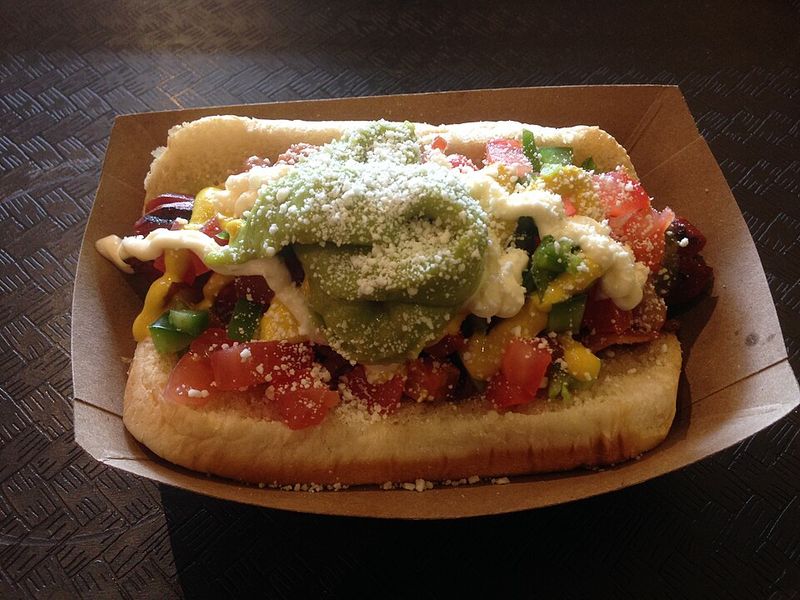
Tucson’s gift to hot dog lovers wraps a frank in bacon, tucks it into a soft bolillo roll, then piles on pinto beans, grilled onions, fresh tomatoes, mayo, mustard, and jalapeños.
This Mexican-influenced creation emerged from Hermosillo, Sonora, but Arizona claimed it hard.
Street vendors sell these beauties from carts late into the night. The bacon grease soaks into the bread while everything else creates flavor chaos in the best possible way.
9. Ripper Hot Dogs (New Jersey)
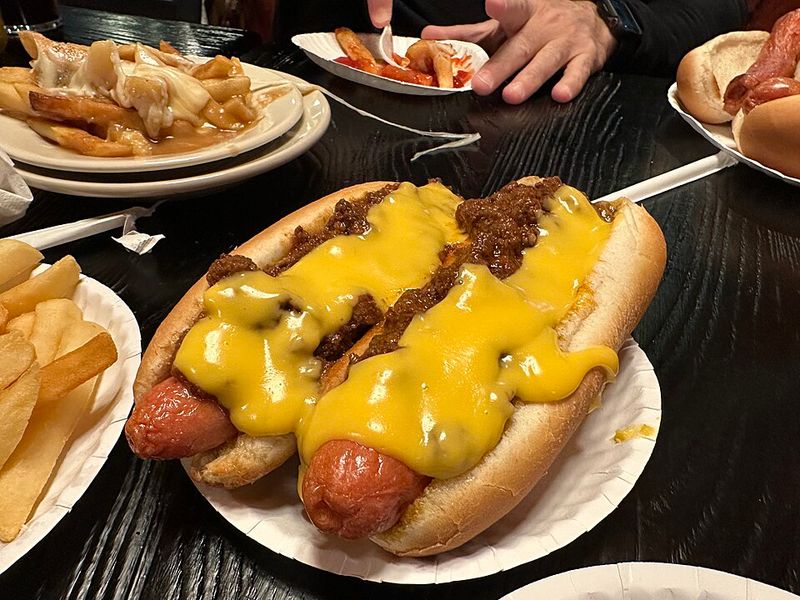
New Jersey deep-fries its hot dogs until the casings split open – hence the name “rippers.” Rutt’s Hut in Clifton made this cooking method famous, creating dogs with crispy, almost burnt exteriors and juicy insides.
Order them “in the mud” if you want them smothered in dark, spicy relish. The frying technique isn’t fancy, but it transforms ordinary franks into something with serious texture and flavor.
10. Pepperoni Rolls (West Virginia)
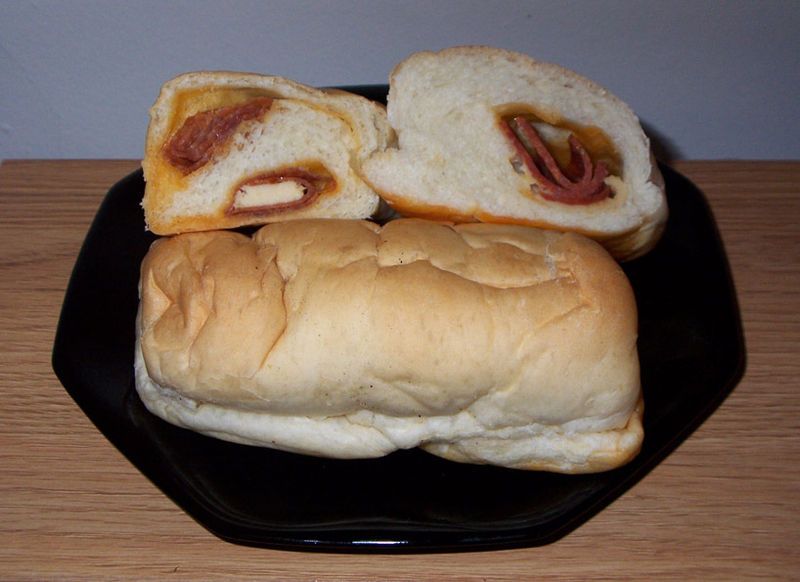
Coal miners needed portable lunches that wouldn’t spoil underground, so Italian immigrants in West Virginia baked pepperoni right into bread dough.
These handheld rolls became the state’s signature snack, sold everywhere from gas stations to bakeries.
Some versions add cheese, but purists insist on just pepperoni and bread. The pepperoni releases its spicy oils into the dough while baking, creating pockets of flavor throughout.
11. Frybread Tacos (Oklahoma/Native Nations)
Frybread emerged from painful history – when Native peoples received government rations of flour, sugar, and lard during forced relocation.
They created something beautiful from hardship: puffy, golden fried dough that’s now a cultural treasure.
Top frybread with seasoned meat, beans, lettuce, cheese, and tomatoes for an Indian taco.
Oklahoma’s Native communities perfected this dish, which appears at powwows and gatherings across Indian Country, representing resilience and creativity.
12. Dutch Baby Pancake (Pacific Northwest)
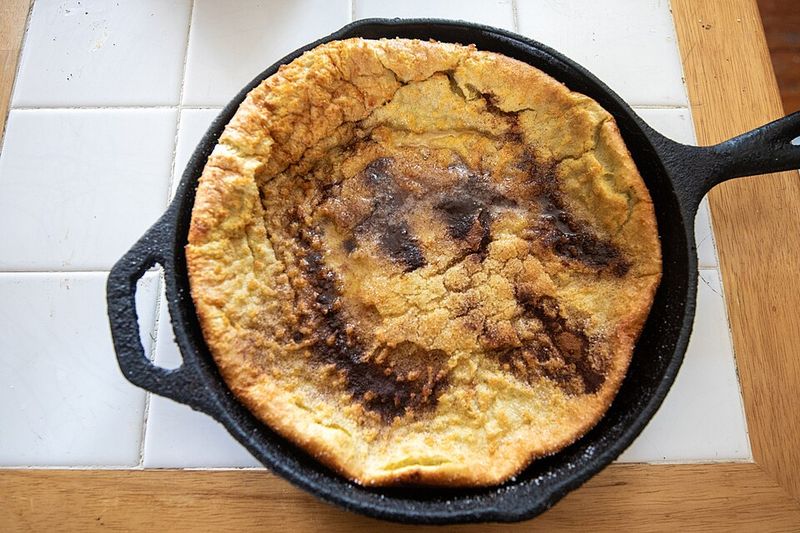
Seattle’s breakfast showstopper puffs up dramatically in the oven, creating crispy edges and a custardy center. Despite the name, Dutch Babies have German roots – the “Dutch” likely comes from “Deutsch.”
Manca’s Cafe in Seattle popularized them in the early 1900s, and Pacific Northwest brunch spots have been serving them ever since.
The pancake deflates quickly after leaving the oven, so snap your photos fast. Dust with powdered sugar and squeeze fresh lemon over the top.
13. Lobster Pie (Maine)
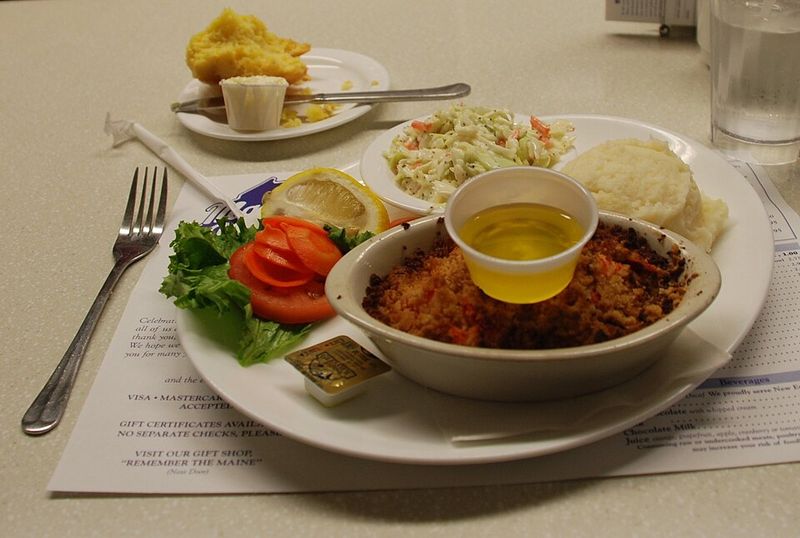
Forget lobster rolls for a minute – Maine’s lobster pie deserves equal attention. Chunks of sweet lobster meat swim in rich, creamy sauce, all topped with buttery cracker crumbs and baked until golden.
This isn’t a pie with crust; it’s more like a luxurious casserole that coastal restaurants serve when you want lobster but need something warming.
The cracker topping adds crunch while the filling stays decadent. It’s comfort food that happens to contain one of the ocean’s finest treasures.
14. Horseshoe Sandwich (Illinois)

Springfield, Illinois created this monster: thick toast topped with a hamburger patty or other meat, buried under a mountain of french fries, then drowned in cheese sauce.
The Horseshoe supposedly got its name because the toast pieces resemble a horseshoe when arranged properly.
Finishing one requires serious appetite and zero shame. Half portions called “ponies” exist for the less ambitious. The cheese sauce – never just melted cheese – makes or breaks the whole production.
15. Chicken Riggies (Central New York)
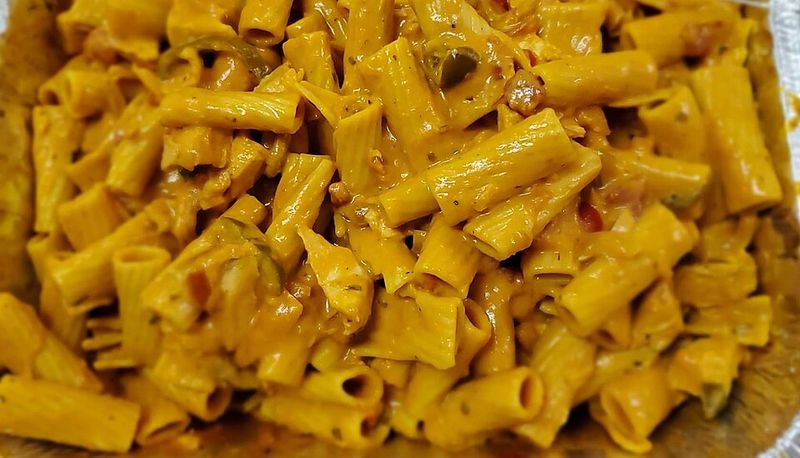
Utica, New York’s signature pasta dish combines rigatoni with chicken chunks in a creamy tomato sauce spiked with cherry peppers.
Every Italian restaurant in the region serves their own version, and locals argue passionately about whose recipe reigns supreme.
Some cooks add more tomato, others more cream – the debate never ends. Outside Central New York, riggies remain practically unknown, which seems criminal.
16. Bierocks (Kansas)
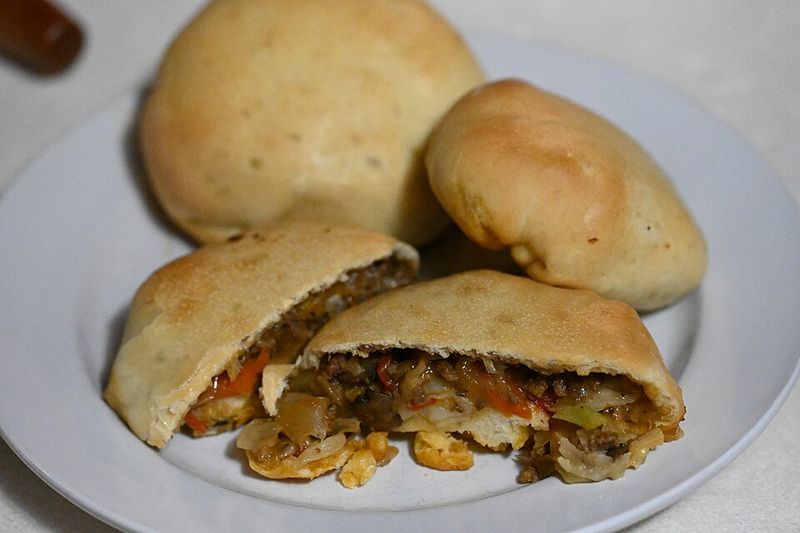
German-Russian Mennonites brought bierocks to Kansas, creating the state’s answer to Nebraska’s runza. These stuffed bread pockets hold savory ground beef, cabbage, and onions – perfect portable meals for farmers working long days.
Church fundraisers across Kansas still sell bierocks by the dozen. Families have secret dough recipes passed down through generations.
The filling might sound simple, but the combination becomes something greater than its parts, especially when the bread achieves that perfect golden-brown crust.
17. Loco Moco (Hawaii)
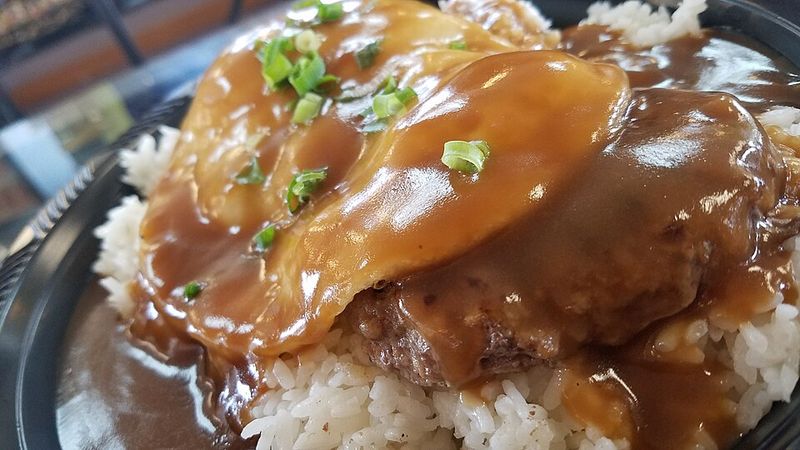
Hawaii’s ultimate comfort food stacks white rice, a hamburger patty, a fried egg, and brown gravy all on one plate.
A Hilo restaurant created loco moco in the 1940s for hungry teenagers who wanted something filling, cheap, and fast.
Variations exist with Spam, teriyaki chicken, or kalua pork, but the original beef version remains the gold standard. It’s breakfast, lunch, or dinner depending on your mood.
18. Frogmore Stew (South Carolina)

Despite the name, no frogs appear in this Lowcountry favorite.
Frogmore Stew – so called Lowcountry Boil – throws shrimp, corn, potatoes, and smoked sausage into a spicy boil, then dumps everything onto newspaper-covered tables for communal feasting.
The dish originated on St. Helena Island in a community called Frogmore.
Coastal South Carolinians make massive batches for summer gatherings, where eating with your hands is not just acceptable but required. The spice level varies wildly depending on who’s cooking.
19. Cioppino (California)
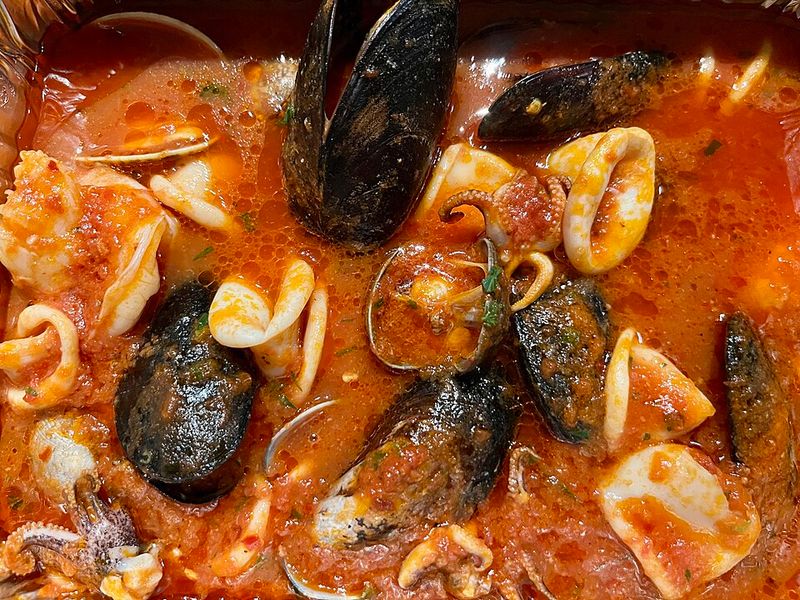
San Francisco’s Italian fishermen created cioppino in the late 1800s, tossing together the day’s catch into a tomato-wine broth. This seafood stew typically includes Dungeness crab, clams, mussels, shrimp, and firm white fish.
Cracking crab shells at the table is part of the experience – messy but worth it. The broth soaks up all those ocean flavors, practically demanding crusty sourdough for dipping.
20. Cheese Curds (Wisconsin)
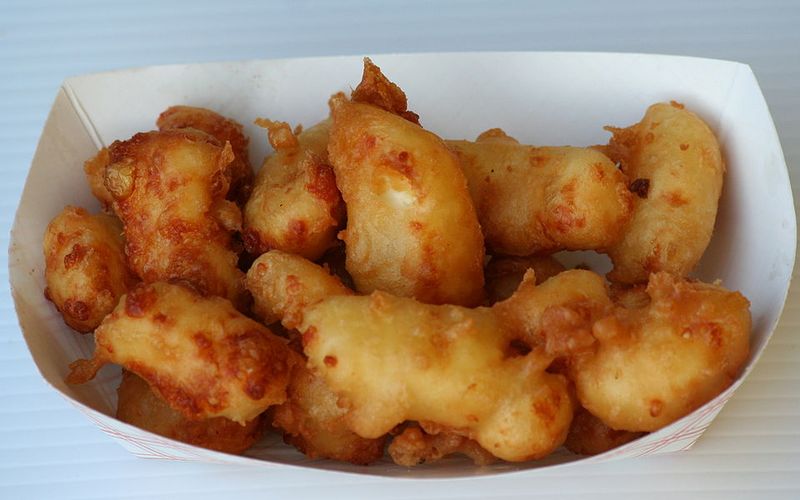
Wisconsin’s squeaky cheese curds are fresh cheddar chunks that haven’t been aged or pressed into blocks. Eat them fresh and they squeak against your teeth – that’s how you know they’re good.
Deep-frying curds became a state fair tradition that spread to bars and restaurants statewide. The breading gets crispy while the cheese inside turns molten and gooey.
Ranch dressing makes a common dipping sauce, though some purists skip it entirely. They’re basically Wisconsin’s answer to French fries.

